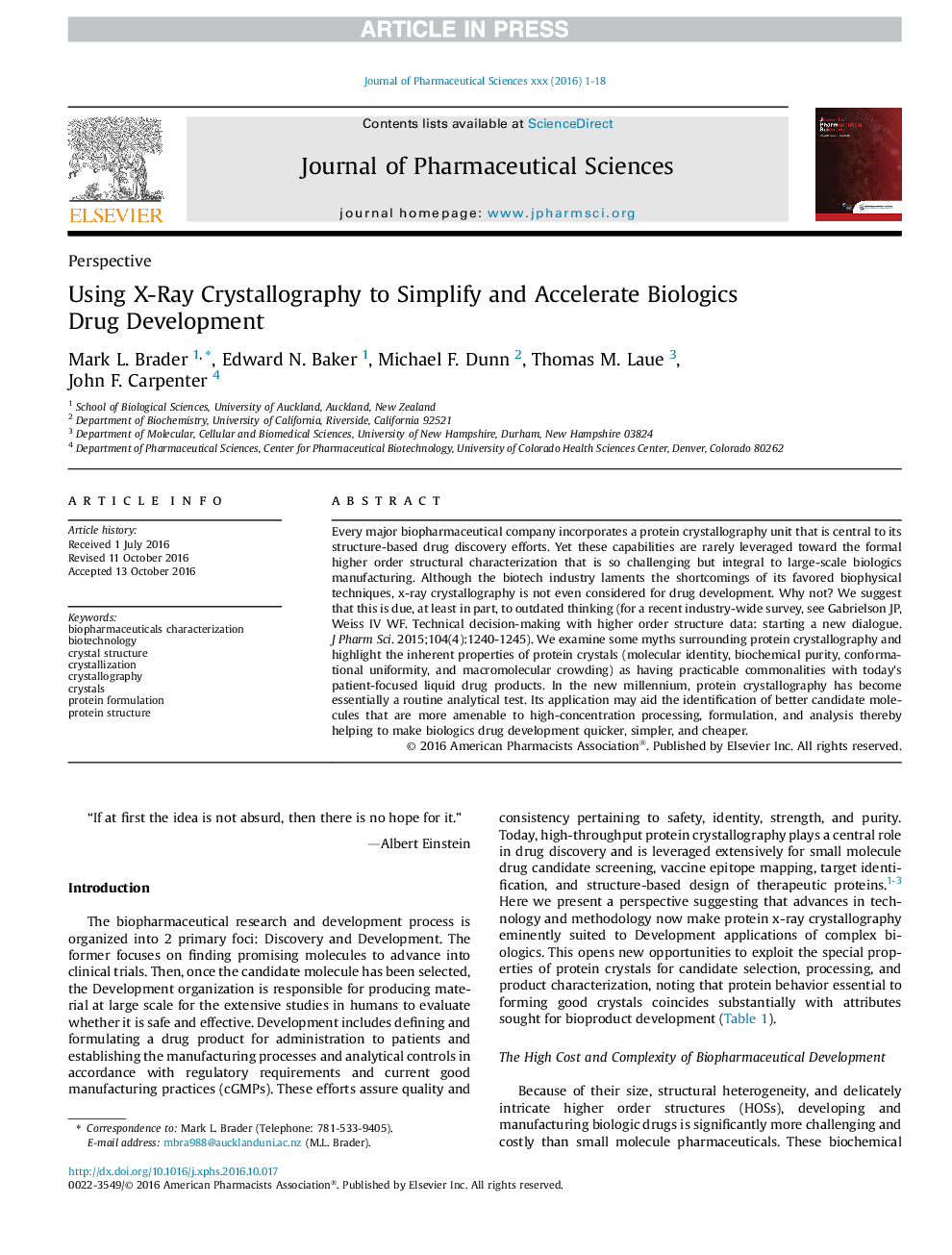| Article ID | Journal | Published Year | Pages | File Type |
|---|---|---|---|---|
| 8514414 | Journal of Pharmaceutical Sciences | 2017 | 18 Pages |
Abstract
Every major biopharmaceutical company incorporates a protein crystallography unit that is central to its structure-based drug discovery efforts. Yet these capabilities are rarely leveraged toward the formal higher order structural characterization that is so challenging but integral to large-scale biologics manufacturing. Although the biotech industry laments the shortcomings of its favored biophysical techniques, x-ray crystallography is not even considered for drug development. Why not? We suggest that this is due, at least in part, to outdated thinking (for a recent industry-wide survey, see Gabrielson JP, Weiss IV WF. Technical decision-making with higher order structure data: starting a new dialogue. JÂ Pharm Sci. 2015;104(4):1240-1245). We examine some myths surrounding protein crystallography and highlight the inherent properties of protein crystals (molecular identity, biochemical purity, conformational uniformity, and macromolecular crowding) as having practicable commonalities with today's patient-focused liquid drug products. In the new millennium, protein crystallography has become essentially a routine analytical test. Its application may aid the identification of better candidate molecules that are more amenable to high-concentration processing, formulation, and analysis thereby helping to make biologics drug development quicker, simpler, and cheaper.
Keywords
Related Topics
Health Sciences
Pharmacology, Toxicology and Pharmaceutical Science
Drug Discovery
Authors
Mark L. Brader, Edward N. Baker, Michael F. Dunn, Thomas M. Laue, John F. Carpenter,
